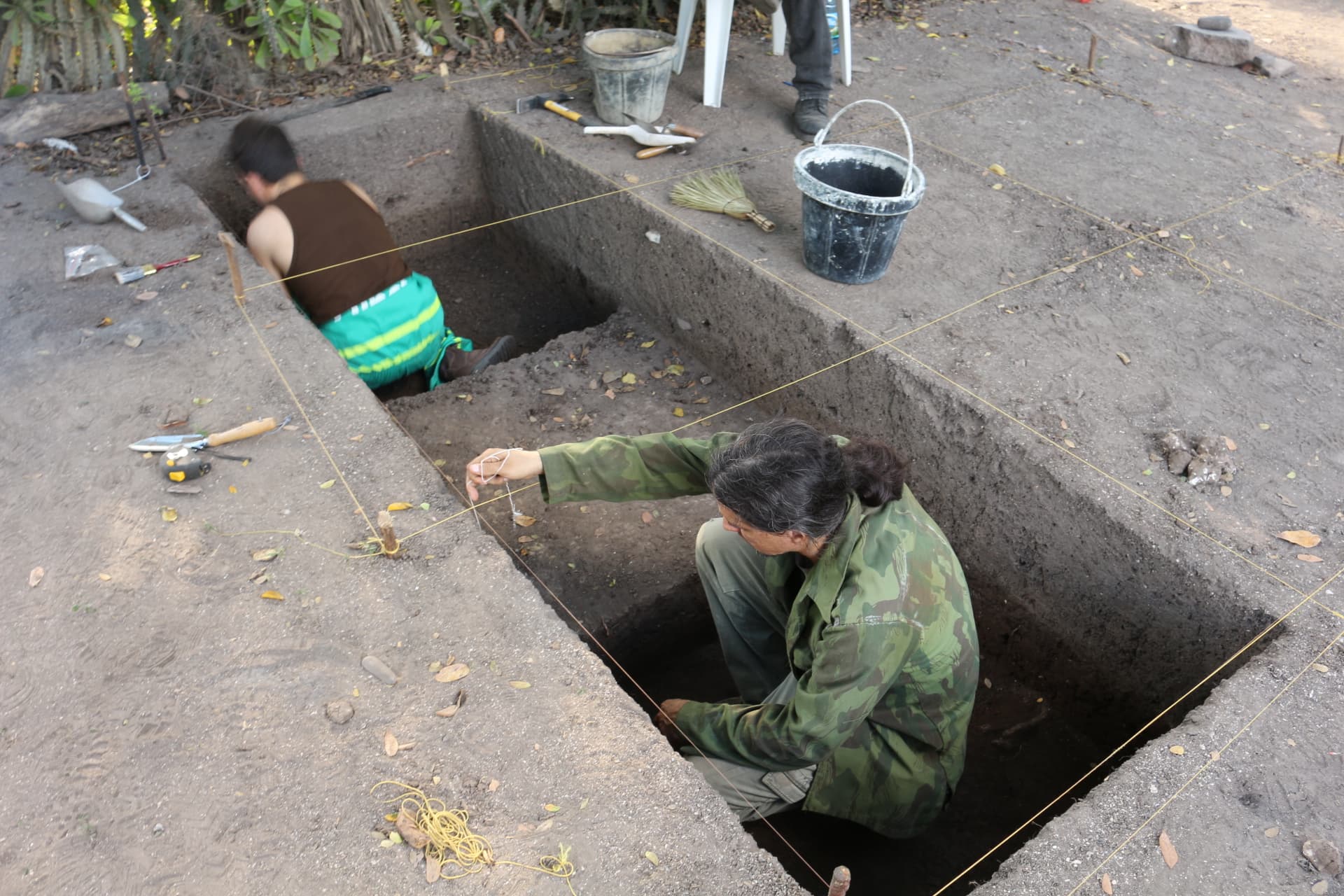Ancient DNA illuminates the history of the pre-Columbian settlement of the Caribbean
A new study led by researchers from the Caribbean, Europe and North America reveals that the Caribbean was colonized by several successive dispersions that originated on the American continent. Using ancient DNA from more than 93 Caribbean islanders, the IBE-involved international team has discovered that the region was colonized and resettled at least three times from different parts of the American continent. Published in Science, the research points out that, despite the multiple migrations and connections of the established and resettled groups, there was little miscegenation among the first inhabitants of the Caribbean islands.
 The Caribbean was one of the last regions of the Americas to be colonized by humans thousands of years ago. Now, a new study published in the journal Science sheds new light on the initial colonization of the Caribbean islands.
The Caribbean was one of the last regions of the Americas to be colonized by humans thousands of years ago. Now, a new study published in the journal Science sheds new light on the initial colonization of the Caribbean islands.
Using ancient DNA, the international research team with the participation of the Institute of Evolutionary Biology (IBE), a joint center of the Spanish National Research Council (CSIC) and the Pompeu Fabra University (UPF), found evidence of at least three events that led to the human population of the region.
"The new data gives us a fascinating insight into the history of early migrations in the Caribbean and connects the region with the rest of the Americas," says Hannes Schroeder, associate professor at the Globe Institute, University of Copenhagen, and co-responsible of the study. "The results of DNA analysis shed light on archaeological discoveries and allow us to examine in detail how the Caribbean was first colonized."
The international team's research shows a connection between the continental Americas and the islands, and the various groups established and resettled in the Caribbean on several occasions.
More data, more details
The researchers analysed the genomes of 93 ancient Caribbean islanders who lived between 400 and 3200 years ago using bone fragments excavated by Caribbean archaeologists from 16 archaeological sites across the region.
Due to the region’s warm climate, the DNA from the samples was not very well preserved. But using so-called targeted enrichment techniques, the researchers managed to extract enough information from the remains.
“These methods allowed us to increase the number of ancient genome sequences from the Caribbean by almost two orders of magnitude and with all that data we are able to paint a very detailed picture of the early migration history of the Caribbean,” says Johannes Krause, Director of the Max Planck Institute for the Science of Human History, and another senior author of the study.
The researchers' findings indicate that there have been at least three different population dispersals into the region: two earlier dispersals into the western Caribbean, one of which seems to be linked to earlier population dispersals in North America, and a third, more recent ‘wave’, which originated in South America.

Connections across the Caribbean Sea
Although it is still not entirely clear how the early settlers reached the islands, there is growing archaeological evidence indicating that, far from being a barrier, the Caribbean Sea served as a kind of ‘aquatic highway’ that connected the islands with the mainland and each other.
“Big bodies of water are traditionally considered barriers for humans and ancient fisher hunter gatherer communities are usually not perceived as great seafarers. Our results continue to challenge that view, as they suggest that there was repeated interaction between the islands and the mainland,” says Kathrin Nägele, PhD student at the Max Planck Institute for the Science of Human History and one of the first authors of the study.
Biological and Cultural Diversity in the Ancient Caribbean
“The new data support our previous observations that the early settlers of the Caribbean were biologically and culturally diverse, adding resolution to this ancient period of our history“, says Yadira Chinique de Armas, Assistant Professor in Bioanthropology at the University of Winnipeg who currently co-directs three large scale excavations in Cuba as part of the SSHRC project.
The researchers found genetic differences between the early settlers and the newcomers from South America who, according to archaeological evidence, entered the region around 2800 years ago.
“Although the different groups were present in the Caribbean at the same time, we found surprisingly little evidence of admixture between them”, adds Cosimo Posth, group leader at the Max Planck Institute for the Science of Human History and joint-first author of the study.
"This project is the culmination of a work that I published almost twenty years ago on pre-Columbian mitochondrial DNA in Cuba and shows the incredible advance that has been produced in sequencing techniques since then, and that literally makes possible what was previously impossible", says Carles Lalueza-Fox, Principal Investigator of the paleogenomics group at IBE.
“The results of this study provide yet another layer of data that highlights the diverse and complex nature of pre-Columbian Caribbean societies and their connections to the American mainland prior to the colonial invasion,” says Corinne Hofman, Professor of Archaeology at Leiden University and PI of the ERC Synergy project NEXUS1492.
“Genetic data provide a new depth to our findings” agrees Mirjana Roksandic, Professor at the University of Winnipeg and the PI on the SSHRC project.
The study was funded by the Max Planck Society, the European Research Council and the Social Sciences and Humanities Research Council of Canada and conducted in the context of the ERC Synergy Project Nexus1492 and the SSHRC Project on Cuban Population Diversity.
Reference article: K. Nägele et al., "Genomic insights into the early peopling of the Caribbean"; (2020). Science. DOI: 10.1126/science.aba8697
